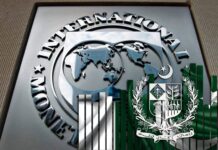ISLAMABAD: On Tuesday, the Pakistani rupee experienced a decline of Rs2.78 against the US dollar in interbank trading.
According to the Exchange Companies Association of Pakistan, the local currency was being traded at Rs291.3 in the afternoon, compared to its previous closing rate of Rs288.5.
In the open market, the US dollar was being exchanged above Rs300. Currency dealer Zafar Paracha explained that this depreciation of the rupee was anticipated. He mentioned that based on an agreement with the International Monetary Fund (IMF), there should ideally be a 1% difference between the exchange rates of the open market and the interbank market.
Paracha also pointed out that the open market was witnessing an upward trend, which was influencing the interbank market as well. He further noted that the transition between governments also played a role in the fluctuation of the dollar rate. Typically, outgoing governments leave challenging decisions for their successors, who have less of a political stake in the matter.
Anticipating continued pressure on the rupee, Paracha highlighted that the government’s policies were conflicting and stressed the need for structural reforms. He stated that while Pakistan’s financial credentials were strong, its policies were lacking coherence.
In recent days, the US dollar had reached 302 rupees in the open market, surpassing the limits set by the IMF to maintain a difference of 1% to 1.5% between open and interbank exchange rates.
Under the terms of a $3 billion standby arrangement with the IMF signed in late June, the previous coalition government had agreed to uphold a unified currency rate in both the interbank and open markets, allowing for a slight increase of up to 1.5% in the open market value.
























Great job